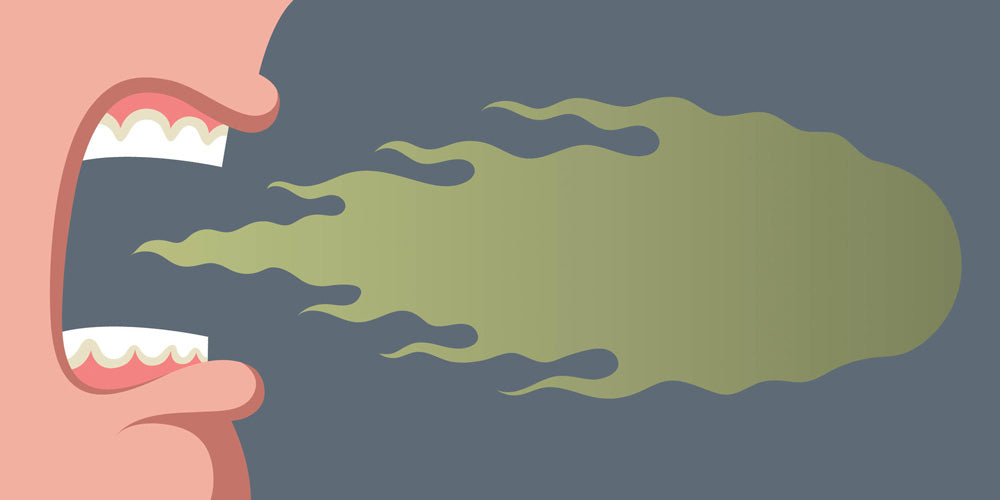
Bad Breath
Share

Chronic bad breath afflicts a large percentage of the adult population especially older adults and by some estimates is over 50% of the population. We are not talking about bad breath resulting from that plate of pasta you had for lunch, rather we are referring to that umistakable sulphur like smell that never seems to go away. All of us at some point have caught a whiff of someones funky breath or perhaps you have even noticed it eminating from your own mouth. Bad breath, known to your dentist as halitosis, is actually a sign of poor oral health resulting from gum disease. It is also a sure sign of dental tartar buildup as your mouth will not be giving off a rotten egg smell known as “volitol sulphur compounds” (VSC’s) without a place for the bad bacteria to live.
Our mouth is filled with hundreds of different types of microbial life that make up our oral microbiome that is so crucial to digestion and good health. Our mouth is the first line of defense for our immune system. A healthy mouth provides protection from many opportunistic germs and viruses. In a healthy mouth, there is a natural balance between the good bacteria and the bad and the naturally occurring biofilm (plaque) buildup following a meal is easily removed and does not become pathogenic…that is, it does not cause damage to surrounding tissue or teeth and a healthy mouth does not smell bad!
Plaque is a sticky film that is made up of saliva, remnants of what we eat, and microbes
(bacteria) of which the majority are beneficial to our health while only a few are not. Plaque makeup varies greatly between people based on genetics and of course the meals they consume. The microbes in plaque and saliva feed on the sugars in the saliva that come from sugary food and drinks and “fermentable carbohydrates,” sugars from food such as bread. The good microbes in saliva compete with the bad microbes for the food (sugar) resources in the plaque and thereby keep the bad microbes from multiplying.
Tartar is formed from the dead bacteria in plaque that have mixed with free calcium in your saliva that forms calcium phosphate salt. Teeth are made of calcium phosphate so the tartar (a salt) is ionically attracted to tooth enamel (sort of an electrostatic attraction). The issue with tartar is that it is both rough and porous, providing a perfect structure for sticky plaque to adhere to, die and subsequently build more tartar. It also provides a secure habit for bad bacteria to colonize and thrive in. Tartar that is not removed will expand and grow down into the gum line shielding and protecting the bad bacteria from even the most potent germ-killing mouthwash such as prescription Peridex (Chlorhexidine).
Germ Killing (antimicrobial) mouthwashes are like a nuclear bomb going off in your mouth indiscriminately killing the good bacteria that have been keeping the bad ones in check. The very tough Gram-negative bacteria living in the gum tooth pockets are likely to be unhurt by the attack and are then allowed free rein to consume available food sources unchallenged all the while giving off bad smelling VSC’s deep in the gum pockets. What’s more, the millions of dead bacteria pile up and form additional tartar that only serve to protect the bad bacteria from further attack. It is well known that germ killing rinses such as prescription Peridex (Chlorhexidine) mouthwash prescribed to you by your dentist will build tartar and thus its use should be limited like all germ-killing rinses.
The fact is that if you have chronic bad breath, you need to first remove the tartar habitat that is the source of gum infection and resultant sulphur smell. This can be done either through a dental cleaning or diligent use of Periogen Toothpaste and Periogen Oral Rinse concentrate applied via an oral irrigator for deep pocket cleaning. Oral irrigators are clinically proven to reach down as far as 6mm into gum-pockets and are a perfect delivery device for Periogen Oral Rinse that has been mixed into the water reservoir. If you choose to use Periogen in an oral irrigator, you should see noticeable improvement within two weeks of twice daily irrigation.







